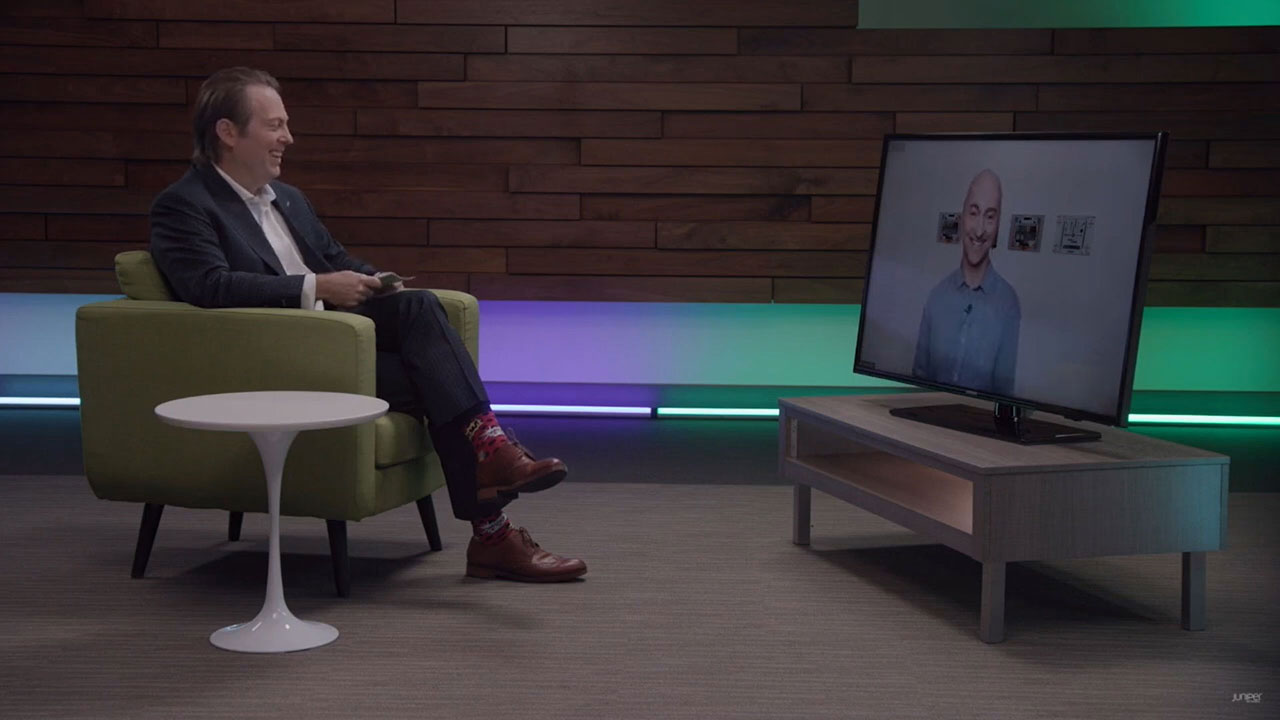How Does HRB Simplify Provisioning in a Cloud-Native Environment?


This question of the day is about EVPN Host Routed Bridging (HRB).
In this, the fifth of six Data Center Question of the Day videos, Juniper’s Wen Lin explains how HRB simplifies provisioning in the cloud-native environment.
You’ll learn
The workflow for auto provisioning based on user intent
About the Juniper Container Network Interface plugin and its capabilities
How HRB is making provisioning simpler for customers in the data center
Who is this for?
Host

Guest speakers

Transcript
0:00 [Music]
0:12 hi this is eric stinson from juniper's
0:14 product marketing team and i am back
0:16 again today for another question of the
0:18 day in our host garden bridging uh in
0:21 the data center with wen lin one of our
0:23 distinguished engineers welcome back
0:25 gwen hi eric thank you
0:28 sure thanks for joining um
0:30 so today our question is
0:33 how does host router bridging simplify
0:35 provisioning in the cloud native
0:37 environment
0:38 evpn host value bridging
0:41 is built with a cloud native approach to
0:44 satisfy the demand that is application
0:47 driven a network easy to manage and a
0:50 provision
0:51 evpn host valuable region
0:54 provide
0:55 auto provisioning
0:57 for evpn
0:59 based on the user intent
1:01 so how does that work here's the flow
1:04 i'm gonna talk about for the
1:06 auto provisioning of a host wallet
1:08 region based on user intent
1:11 first the user specify what is the
1:14 intent basically what is the design
1:16 outcome
1:18 as you know host router bridging support
1:20 evpn multi-tenancy
1:22 and the evpn vdm based nvidia aware
1:26 bundle service
1:28 so the intent is for evpn multi-tenancy
1:33 what is the name and route target for
1:36 the tenant
1:38 macro and ipv
1:41 that user application want to create or
1:44 join
1:45 and for the bridging
1:47 if a vxlan used what is the bridge
1:50 domain in terms of a vni that the user
1:53 application want to attach to
1:56 and then
1:57 juniper container network interface
2:00 plugin will translate users intent
2:04 to your familiar journals
2:07 ci for evpn
2:10 and it will automatically push the
2:13 cli for confirming evpn host router
2:17 region to crpd
2:21 juniper cni will also set up the network
2:26 connection between your user application
2:30 parts to its designed bridge domain for
2:33 that tenant
2:35 and then crgd will
2:37 auto discover and establish evpn the
2:40 extent tunnel
2:42 and on top of that it will program the
2:45 forwarding
2:48 so this is how the workflow for
2:51 auto provisioning based on the user
2:53 intent
2:54 that hosts loud data bridging
2:56 provide
2:59 well thank you very much wen it sounds
3:01 like uh host started bridging is really
3:03 rolling into the whole juniper
3:05 intent-based networking strategy which
3:07 is a great thing making it simpler for
3:10 our customers
3:12 in the data center and
3:13 this is
3:14 this is what we love to hear so
3:16 you know thank you very much for your
3:18 time and thank you for the explanation
3:20 and i hope you have a great day
3:22 thank you eric
3:27 [Music]



























